|
Image C/O Bloomberg / David Paul Morris By Andrew Martinez Cabrera Associate Editor On April 11, the Port of Oakland’s Board of Commissioners voted unanimously to rename their operating airport, the Metropolitan Oakland International Airport (OAK), to “San Francisco Bay Oakland International Airport.” The following day, the Alameda County Board of Supervisors unanimously supported the name change. The success of the vote follows a March 29 announcement of the inevitable rename, in the hopes of “boosting geographical awareness” of OAK’s airport location.
In their April 12 press release, Executive Director for the Port of Oakland, Danny Wan, explained that due to the lack of name recognition for OAK and the need to increase the economic wealth of the East Bay, the new rebrand will allow for “[easier travel] for thousands of people and help grow the local economy.” In the same April 12 press release, the Port of Oakland listed local businesses’ support for the renaming, many of which reside in Oakland, in addition to the visiting bureaus for Visit Berkeley, Visit Walnut Creek, and Visit Tri-Valley. Support for the rebrand exceeds the Bay Area, as big airliners such as Southwest Airlines, Spirit Airlines, and Volaris have also vocalized their endorsement for the name change. These airliners hold large shares in OAK. For example, Southwest had the highest carrier share at 82.26% in a Feb. 2023 - Jan. 2024 window, estimated at 8,580 passengers, according to the Bureau of Transportation Statistics. However, on April 18, the City of San Francisco filed a federal trademark infringement lawsuit against Oakland. The lawsuit was filed by San Francisco’s City Attorney, David Chiu. Their cited complaints against the defendant (Oakland) include “Trademark Infringement (Lanham Act, 15 U.S.C. § 1114)[,] (2) Unfair Competition/False Designation of Origin (Lanham Act, 15 U.S.C. § 1125(a)) [and] (3) Common Law Trademark Infringement[.]” Just as the Port of Oakland owns its OAK title, the city of San Francisco owns the federal trademark name of “San Francisco International Airport” or SFO. In addition to alleged trademark infringement, Chiu also alleges in the lawsuit that Oakland’s intention of using ‘San Francisco’ in its rename will “almost certainly cause confusion among consumers and the public generally,” internationally or domestically. Also opposing the change include airliners such as United Airlines, whose carrier shares at SFO are 43.34%. In response, the Port of Oakland has denied any sort of infringement due to the renaming of its airport. Port of Oakland’s attorney Mary Richardson told CNN that “San Francisco’s lawsuit is disappointing… We will vigorously defend our right to claim our spot on the San Francisco Bay. We are standing up for Oakland and our East Bay community.”
0 Comments
Image c/o writer/Pocket Gamer By Matthew Colvin News Reporter In early March, a House of Representatives committee unanimously voted to pass a bill that would force Chinese company ByteDance to either sell off TikTok within approximately five months, or face the app’s total ban within the United States’ borders. Despite ByteDance CEO Shou Chew testifying last year that the app poses no threat to Americans, legislators still moved to ban the app out of fear that it was allowing the Chinese government to spy on US citizens. As Washington Republican Rep. Cathy McMorris Rodgers said, “Today, we will take the first step in creating long-overdue laws to protect Americans from the threat posed by apps…”
However, it seems that Congress’ moral panic over mobile applications has not stopped there. On Sunday a House panel announced a sweeping bill that, if passed, would ban numerous apps and change the face of the App Store for good. While the bill is comprehensive, here’s a quick rundown on some of the biggest apps you may see vanish from the App Store soon if the bill passes, and why: UberEats is one of the first apps listed in the bill to be banned completely. While the service has had its fair share of controversy in the past, including allegations of monopolistic behavior and an antitrust lawsuit in 2022, Congress’ reasons for banning the app seem quite different; UberEats’ drivers never manage to deliver to the Senate Building in under forty-five minutes. As stated in the bill, Senator Ted Cruz (R-TX) “just isn’t him when he’s hungry” and the app’s sub-par performance “is no longer acceptable.” Tinder is being struck down, too; while speaking in favor of the bill, House Representative and former Speaker Nancy Pelosi (D-CA) said, “I have had many good friends try to use [Tinder], and the app is inexcusable. These very, very good friends are unable to find matches, and the app and its users are just very discriminatory in who they choose to match with.” Continuing to speak on behalf of her unidentified ‘good friends,’ Pelosi finished, “Discriminating against 84 year-old married women from Baltimore who accidentally swipe left when they mean to swipe right is intolerable in the land of the free. That’s what my friends say.” She received a standing ovation. Service and social apps are not the only ones that will be feeling the heat of this bill, however; even mobile games may not be safe. Subway Surfers is one of the biggest and most controversial app names listed in the bill’s ban list. According to the bill, Senator Mitch McConnell (R-KY) has been caught playing the game during numerous Senate sessions in recent months, and has had to have had his phone temporarily confiscated every time. Unfortunately, according to the bill, McConnell enters “grumpy mode” upon losing phone privileges and refuses to speak on any matters until he has received “an apple juice and a piece of string cheese.” As stated in the bill, this has “utterly derailed multiple sessions of the Senate, and must be curtailed immediately by a ban of the app to get him back on track.” The banning of Subway Surfers has proven controversial, though, as it seems Senator McConnell is not the only one with a strong connection to the game. Democratic opponents to the bill have claimed that President Joe Biden is unable to stay awake at Cabinet meetings unless pre-recorded Subway Surfers gameplay is being projected in the background, and that a ban of the app will interfere in his presidential duties and campaign for reelection. Should the bill pass, his supporters worry that they will need to find new means of “enrichment” for Biden if his 2024 presidential bid is to succeed. The Biden administration did not respond to our request for comment. Donald Trump is restored to the Colorado ballot in an unprecedented case. Image c/o Chase Woodruff/Colorado Newsline By Anthony Romero News Reporter On March 4th, the Supreme Court ruled that states may not disqualify former President Donald Trump from running in the upcoming presidential election. The judgment was announced before the Super Tuesday primaries and ultimately rejected challenges made by legislative officials in Colorado, Maine, Illinois, and other states that sought to remove Trump from their presidential primary ballots. The Colorado Supreme Court came to its decision by citing Section 3 of the 14th Amendment, which explicitly disqualifies government officials from running for public office after engaging in insurrectionist behavior. Colorado’s justices purported that Trump’s attempts to overturn the results of the 2020 presidential election resulted in the January 6th riots on the Nation’s Capital, making him ineligible to run for president. “We do not reach these conclusions lightly,” wrote the Colorado Court’s majority. “We are mindful of the magnitude and weight of the questions now before us. We are likewise mindful of our solemn duty to apply the law, without fear or favor, and without being swayed by public reaction to the decisions that the law mandates we reach.”
Section 3 of the 14th Amendment traces its origins back to the post-Civil War Reconstruction Era, acting as a legislative effort to address former Confederates who held office. A criminal conviction in this context is not necessary to enforce the provision, and Congress has historically refused to seat members under this clause. In the March 4th decision, all nine justices were in agreement, and the unsigned majority opinion of the court cited that this constitutional power resides with Congress instead of the states. Although states may use Section 3 to address dubious candidates running for state office, they do not have the same authority to enforce this law against candidates for national office. If states were allowed to disqualify federal government officials, an increase in disagreements regarding the eligibility of prospective leaders would threaten the stability of the relationship between the federal government and the people of the United States. Despite all justices reaching the same conclusion, there were some distinctions in their written statements, none directly addressing Trump’s actions as outright insurrection. Five of the Conservative justices (Chief Justice John Roberts and Justices Clarence Thomas, Samuel Alito, Neil Gorsuch, and Brett Kavanaugh) completely agreed with the majority opinion that Section 3 does not qualify states with the power to remove a federal official or candidate. In addition, they also concurred that Congress would need to develop legislation that creates an “enforcement mechanism” to enact the terms of the Fourteenth Amendment. This call for additional Congressional legislation was opposed by the three liberal justices (Justices Sonia Sotomayor, Elena Kagan, and Ketanji Brown Jackson) as they saw the Court’s legal jurisprudence as excessive and would only serve to shut the door on other potential methods of enforcement. The three Justices agreed with the majority opinion that Section 3 is reserved for Congress, but they urged the Court to practice judicial restraint when proposing to make decisions on matters that extend beyond this specific case. Justice Amy Coney Barrett made a distinctive stance by separating herself from both factions in her concurring opinion. Justice Coney Barrett agreed with the liberal Justices’ claim that the Colorado Supreme Court’s majority opinion overreached in suggesting additional federal legislation to enforce the disqualification provision. However, she questioned the liberal Justices’ tone and suggested that her fellow Justices not amplify their disagreement with the majority opinion. Justice Barrett stated the significance of the Court’s decision on this controversial issue, emphasizing that the unanimous agreement should serve to quell tensions in the nation, not to incur further polarization. “For present purposes,” she wrote in her opinion, “our differences are far less important than our unanimity: All nine justices agree on the outcome of this case. That is the message Americans should take home.” Check out the women-led class happening today in the Recreation Center at 5:00pm! By Jenevieve Monroe News Editor In honor of International Women’s Day and the Recreation Center’s women-led classes, here are some accomplished Gaels that began their athletic career at Saint Mary’s. Valerie Fleming Image c/o Michael Maloney, SF Gate Olympic silver medalist in women’s bobsled, class of 03’ Growing up in Foster City, California, Fleming has always had a home in the Bay Area. She grew up playing a variety of sports, spending her youth dreaming of becoming an Olympic athlete. During her college undergraduate years, Fleming took up javelin at the University of California at Santa Barbara and placed as the women’s champion of the Big West Conference. Fleming then sought her master’s degree in Health, Physical Education, and Recreation at Saint Mary’s College of California. In February of 2006, she went to compete in women’s bobsledding at Italy’s Olympic Winter Games and came home with a silver medal. Louella Tomlinson Image c/o Harry Cabluck, ESPN WNBL champion, Hungarian league champion, class of 11’ As the daughter of a triple-Olympian father and a double world champion mother, Tomlinson knew at a very young age that basketball would be her passion. After graduating from high school in Melbourne, Australia, she attended Saint Mary’s College of California to receive her bachelor’s degree in kinesiology while also serving as a student athlete for the women’s basketball team. Tomlinson left her mark internationally; by the time she graduated, Tomlinson had set an NCAA record with 156 blocks as a freshman. She returned to Australia as a center for the Dandenong Rangers, leading them to victory in the 2011 to 2012 WNBL championship. For the following season of 2013 to 2014, Tomlinson moved to Hungary to play for the Hungarian club PINKK-Pécsi 424 and also led them to championship. In honor of these amazing Gaels, make sure to go check out the Recreation Center’s “Intro to Rock Climbing with Chloe” at 5:00pm (walk-ins welcome)! Image c/o Chloe Ourada
Image c/o Joe Raedle/Getty Images By Matthew Colvin News Reporter Measles, the viral infection once thought to have been largely eliminated from the United States, has returned in force, with 35 cases having been reported from within 15 states as of February 22. With numbers increasing exponentially in the United Kingdom and other parts of the world and new cases popping up weekly within American borders, experts are becoming increasingly concerned about an outright outbreak.
Prior to the first measles vaccine being distributed in 1963, nearly all children in the US caught measles by age five, and three to four million Americans were infected a year; the average domestic death rate was four to five hundred. The infection usually begins with an intense fever, sometimes as high as 105° F, before developing symptoms of a cough, pink eye, and runny nose. Two to three days after that, the most recognizable indicator of measles manifests; a red, spotty rash that starts at the head and spreads its way all over the body. The disease usually runs its course in about ten days. No effective treatment exists, only the preventative vaccine, and while that vaccine has an incredible efficacy rate, that means very little if a majority of the population doesn’t get it. Unfortunately, that is the exact situation that epidemiologists are faced with worldwide. Measles vaccination rates have been in a constant state of decline since the beginning of the COVID-19 pandemic, and are yet to show any sign of increasing again. With everybody indoors, no measles being spread, and all the focus on a different virus, measles vaccination rates began to lower in 2019, and infection rates shot up not long after. The increase has been exponential; according to the World Health Organization, its European region alone saw an increase from about a thousand cases to over 30,000 in the last year. This increase is “unfortunately, not unexpected given the declining vaccination rates we’ve seen in the past few years,” according to John Vertefeuille of the CDC. Measles is commonly referred to as the ‘inequity virus,’ due to the fact that infection rates have always trended higher in poorer countries, simply because those countries don’t have ready access to the vaccine in the same way that first-world nations do. As such, the general status quo has been that measles has always been exterminated from nations such as the United States and the United Kingdom, but even that has been changing in 2024. England seemed to be the first major inflection point; despite having a long-time status of having eliminated measles, 166 cases popped up from January to February 15 alone, twenty of which were in London. Experts have attributed it to abnormally low vaccination rates for children in the past few years, and while the outbreak has caused a handful more parents to get their children vaccinated, “there are still hundreds of thousands of children who remain unprotected, and therefore remain at risk of serious complications or lifelong disability,” said Dr. Vanessa Saliba of the UK Health Security Agency. The United States seems to be catching on to that unfortunate trend, too. While the nation’s total measles infection count was 58 for all of last year, the US is already on track to surpass that with 35 reported cases; and it’s only the end of February. The biggest outbreak so far is in Florida, with eight cases centralized in that state alone, mostly at Manatee Bay Elementary School, near Fort Lauderdale. With Florida’s Surgeon General not locking the school or area down, the state has come under fire for giving the virus a prime chance to spread. Given that unvaccinated people have a 90% chance of being infected if exposed, the decision to leave Manatee Bay Elementary and the surrounding area open has been labeled by many as risky at best; even a small handful of unvaccinated children could catch and spread the virus to a much larger population. According to Dr. David Kimberlin, an expert of pediatric infection diseases at the University of Alabama, these cases are “not going to stay contained just to that one school, not when a virus is this infectious.” While the United States no longer has any endemic variant of measles, these cases appear to be coming from international travel, and spreading to unvaccinated individuals within the States’ borders. While measles usually clears up in seven to 10 days, it can induce complications such as pneumonia and seizures, and in severe cases, can cause death. Former President Barred From Conducting Business in NY Image c/o Maansi Srivastava/Pool, Reuters By Edith Cuevas News Reporter A New York judge found former President Trump liable for inflating his net worth to secure better insurance and tax rates, according to the Washington Post. Trump has been ordered to pay a penalty of $355 million plus interest, pushing the total penalty to $450 million, according to the New York Times. This decision by Justice Arthur F. Engoron comes after a yearlong battlewhich was put forth by New York’s attorney general. Along with the fine, Trump has also been barred from conducting any business in the state for the next three years. While he remains the owner of his businesses, he no longer controls the business decisions.
His sons Donald Trump Jr. and Eric Trump, have also been barred from conducting business in New York, and they have both been ordered to pay $4 million in fines for falsifying business records. These penalties will undoubtedly cause serious strain to the Trump Organization, and to Trump himself. The former president has 30 days to pay the penalty or secure a bond. Trump must post a bond that covers the full amount in penalties and interest before he is able to appeal this decision by Judge Engoron, according to the Washington Post. As severe as this penalty was, it was the precursor to the criminal trial that is set to begin March 25th. If Trump is convicted, he may be sentenced to up to four years in prison. It is important to note that the presidential candidate would not be able to pardon himself if he were re-elected. Image c/o City of Walnut Creek By Edith Cuevas News Reporter A Walnut Creek City council meeting was hijacked on Tuesday by a white supremacist wearing a “white power” t-shirt. His man identified himself as “Scottie” and delivered a two-minute speech full of hateful and antisemitic rhetoric, going as far as ending his speech with a Nazi salute.
The man expressed that his speech was necessary to speak up about the new restrictions on public comments during zoom meetings of the city council. Scotty expressed that his “first amendment right was being restricted by Jews” directly referring to the only Jewish member of the city council, Kevin Wilk. Directly pointing at Councilmember Wilk, Scotty said “I’m here today because of people like you think we’re scared to show up and show our face and call you out in person, and I dare you to shut me down.” The man immediately left the room after his speech, leaving the Council and attendees shocked in silence. Councilmember Wilk was the first to break the silence, “Mayor [Loella Haskew], I would just like to say something now that public comment has ended, that we live in a free country and there is free speech, and that means that we have to listen to awful and heinous comments like we just listened to,” said Wilk. “And I would like to apologize on behalf of the City Council and anybody that had to hear that horrible, horrible speech.” Mayor Pro Tem Cindy Darling stepped in and added “And we want to apologize to you, Kevin, because we know this is clearly so directed at you and so vile and not who we are as a city.” Councilmember Wilk also expressed, “I’m not going to cower from this. I’m going to stand up for people in the community. For every one of my voice, there’s a thousand people out there that wish… that are feeling that they don’t have a voice.” Walnut Creek police have informed the public that the FBI is aware of this individual and will coordinate with the council to keep all future meetings safe. Delving into the Russian opposition leader’s death and aftermath. Image c/o Shamil Zhumatov/Reuters By Anthony Romero News Reporter Prominent Russian opposition leader Alexei Navalny was announced dead on February 16th by the Russian Federal Penitentiary Service and was confirmed by Navalny’s spokeswoman Kira Yarmysh. Having spent more than a decade in prison, Navalny was being held at an IK-3 penal colony in the arctic town of Kharp, 2,000 kilometers northeast of Moscow, while serving a 19-year jail sentence on charges of political extremism. According to reports from penitentiary staff, Navalny had gone on a walk before suddenly falling ill and losing consciousness shortly after. Despite efforts from medical services, Navalny did not survive the ordeal and his body has only just now been returned to his family on February 24th. The international community has heavily scrutinized the circumstances surrounding Navalny’s sudden death, as questions have been raised about the extent of President Vladimir Putin’s involvement in the elimination of his political enemy.
Navalny has been no stranger to run-ins with the Russian government. A former real estate lawyer, Navalny first delved into politics in 2008 as an anti-corruption activist working on a blog exposing allegations of malpractice and abuse from major corporations run by the Russian state. Navalny’s efforts against Putin’s regime soon gained traction on social media sites like Twitter (now known as X) and Russia’s Facebook equivalent, Vkontakte. He first gained prominence by outright claiming that Putin and his allies were a group of “crooks and thieves,” running a patron system that stole from the nation and its people while enriching themselves. Navalny used his newfound popularity among the Russian middle class to establish the RosPil lawyer group and the Foundation for Fighting Corruption to continue putting pressure on the political elite. In 2011, Navalny led a series of street demonstrations against Putin’s third presidential term, cementing himself as the voice of a modern movement. This outspoken position, while bringing new life to the Russian opposition, would also bring Navalny a lot of strife. The first inklings of political retaliation came in July 2013 when the Russian government sentenced Navalny to a 5-year suspended term related to charges of embezzlement during his early days as an advisor to the local governor of the Kirov region. This was followed by the Yves Rocher case in 2014, in which Navalny and his brother were found guilty of fraud and sentenced to 3 and a half years. The most infamous attempt on Navalny’s life occurred on August 20th, 2020 during a flight from Siberia, when Navalny fell violently ill before going into a coma. After an emergency transfer from Russia to Berlin, German doctors identified traces of the Soviet-era nerve agent called Novichok in his body. The poison was planted in Navalny’s underwear with medical staff stated if it were not for the plane’s emergency landing, he most likely would not have survived. It was this and other attempts to kill or poison Navalny, as well as Russia’s sordid history of eliminating political opponents, that drew suspicion upon Navalny’s actual death. Navalny’s death has left the Russian opposition movement without its most visible leader, casting a shadow on any hope for pushing back against President Putin’s rule. On February 23rd, U.S. President Joe Biden mobilized over 500 sanctions targeting Russian entities, the military-industrial network, and various financial institutions, including 3 officials directly involved with Navalny’s imprisonment. These mark the most extensive package of sanctions since Russia launched an invasion of Ukraine in 2022. “If Putin does not pay the price for his death and destruction, he [Putin] will keep going. And the costs to the United States − along with our NATO Allies and partners in Europe and worldwide − will rise,” announced President Biden. The POTUS described Navalny as a voice of truth and a powerful force against the corruption of the Russian establishment. U.S. Secretary of State Anthony Blinkin, during a conference in Munich, also made a statement regarding Navalny’s fate: “His death in a Russian prison and the fixation and fear of one man only underscores the weakness and rot at the heart of the system that Putin has built. Russia is responsible for this.” As of now, Navalny’s spokeswoman has confirmed that his body has been returned to his mother Lyudmila. Navalny’s mother was reportedly told to agree to a secret burial as criteria for his return, or else he would be buried in the arctic prison grounds where he died. Navalny’s widow Yulia Navalnaya previously accused President Putin of holding her husband’s body “hostage” and maintained that the Russian president had Navalny killed. At the Munich Security Conference, Yulia at first doubted whether Russia was telling the truth about Navalny’s death, but proclaimed, “But if this is true, I want Putin, his entire entourage, Putin’s friends, his government to know that they will bear responsibility for what they did to our country, to my family, to my husband.” Despite international condemnation, the Russian government has continued to deny responsibility and called the international outcry hysterical. Highlighting California’s race for Senate, local measures on the ballot, and polling data for statewide elections. Image c/o Getty image By Jenevieve Monroe News Editor While Saint Mary’s students are cramming to persevere through this wet and dreary February, millions of Californians are preparing their ballots for the upcoming primary election on March 5th. This year’s media headlines have highlighted the race of candidates seeking to succeed late Senator Diane Feinstein. She announced in February 2023, that she would not run for reelection in 2024. Later that September she passed away, leaving behind a legacy as America’s longest serving female Senator. Feinstein’s trailblazing career has inspired citizens across the state to seek out her Senate spot. As of late February, the four remaining frontrunners include:
Adam Schiff (D), Lawyer and former Congressman Steve Garvey (R), former Dodgers player and businessman Katie Porter (D), Lawyer and Congresswoman Barbara Lee (D), Social worker, Congresswoman, and small business owner These candidates attended their third and final debate on Tuesday evening (February 20th). They discussed issues like “career politicians” abusing DC budgets and raising inflation, the return of earmarked funding, oil inflation and climate policy. There was also a heated round of accusations against certain candidates for accepting corporate money “from Big Pharma, Big Oil, and the Big Bank executives.” An updated poll released by Emerson College shows Democratic Rep. Adam Schiff to be in the lead with an overall 28% voter approval rate. He is followed by Republican Steve Garvey at 22%, Democratic Rep. Katie Porter with 16%, and Democratic Rep. Barbara Lee at 9%. There is still a notable margin of undecided voters, polling at approximately 17%. With such a large margin of uncertainty, who knows what the upcoming weeks may hold? The East Bay’s District 12 is also hosting elections for a new representative this year. Expect to see three candidates on the ballot: Tony Daysog (D), Alameda vice mayor Lateefah Simon (D), Nonprofit foundation president Jennifer Tran (D), Professor/Chamber President If you weren’t already stressed out with decisions, prepare to be. Last, but not least, are some of the presidential candidates! You can find the full list of candidates online at California’s Secretary of State webpage. To keep it simple, expect to see six major names on the ballot [endorsed by SF Chronicle]: Nicki Haley (R), former UN ambassador Donald Trump (R), former President Joe Biden (D), US President Dean Phillips (D), Member of Congress Jill Stein, Political activist Cornel West, Political activist While politicians fight their way up the approval ratings, California voters are looking to see what topics they ought to expect at the booths. Voters statewide get the opportunity to weigh in on a single prop issue in March, but will have more to choose from by November. Here’s what to expect for the first proposition: PROP 1, “Mental health care reform including bond measure to fund treatment beds” “Proposition 1 would shift the way California spends tax revenue from the Mental Health Services Act to cover addiction treatment and housing. It would also authorize $6.38 billion in bond funding to build residential mental health treatment facilities. It’s part of Gov. Gavin Newsom’s plan to get people with severe mental illness who are languishing on the streets into housing and treatment.” Make sure all local property owners check their ballots this year! In Contra Costa County, one of the proposed measures has specifically requested $52 million in bonds for the Moraga School District. These bonds are intended to fund the district’s building and facility infrastructure. If Measure D passes, the district will pay for the bonds “by levying $30 per $100,000 in assessed value on property.” A similar measure will be on the ballot for the Antioch School District as well. With a request worth $195 million, the district intends to pay for the bonds “by levying an additional $48 per $100,000 of assessed value for property.” There’s a lot going on for Saint Mary’s students in the next few weeks. Hang in there voters, we’ll get through it. Why is Meta Being Sued and What Effect Has its Technology Had on Local Students? By Lucy Bikahi American Journalism Student As of October 2023, 40+ states are suing Meta for actively contributing to the youth mental health crisis through the technology offered on their social media apps, specifically Instagram. According to an NPR article, Meta is being accused of knowingly deceiving the public in regard to how safe their technology is and, as stated by the attorneys general, has “exploited and manipulated children.” Growing up on social media undoubtedly has an effect on those using it, regardless of how profound it may be from person to person.
In an exposé published in the Wall Street Journal in September of 2021, the newspaper reported that Facebook, now Meta, had conducted research on how Instagram affected the mental health of teenagers using the app. There were clear statistics featured in the article showing that the mental health of teenagers was being negatively affected. Despite having years worth of research on how their app was negatively affecting teenage users, Meta neglected making any significant changes to improve this issue, instead continuing to preach that it was good that their applications were bringing people together and that any negative impacts their applications were having were “quite small.” Emma Dunbar, who has been an educator in SFUSD for 15+ years, sat down for an interview to discuss the impact she has seen social media has had on teenagers’ mental health with the rise of social media. When as if Meta’s applications have had an effect on teenage mental health, Ms. Dunbar answers, “Oh for sure. Basically all school discipline is now attached to social media, and there’s a ton more school discipline. So there’s more mental health [issues] in addition to that discipline,” Ms Dunbar says, speaking from experience as a former principal. One example she gives of the way teens are now utilizing Instagram are massive anonymous group chats that essentially function as online burn books. “Instagram won’t take anything down unless there’s a threat to life, so these massive toxic group chats exist and they really can’t be controlled.” The effects of growing up on social media carry on far past grade school; students who started using social media in middle and high school continue using it through college as it becomes deeply ingrained in users’ lives. “People try to post the best versions of themselves, like a life half of them probably don’t have, and it makes you jealous. It makes you want certain things you think you should have or that you’re not good enough if you don’t have it,” says SMC junior Abigail Burrell, who has been on Instagram since seventh grade. “Seeing what other people post sets these expectations in my mind, it makes me more conscious of what I post,” says SMC junior Jerin Philip, who has been on Instagram since high school. While it’s a more subtle effect than what is being seen in San Francisco’s school district, growing up on Instagram has caused people to obtain a sense of constant comparison as second nature. Meta was contacted for a comment, with a link to the WSJ article included in this article along with interview questions. A response was never received. |
StaffMadison Sciba '24, Archives
November 2023
Categories |

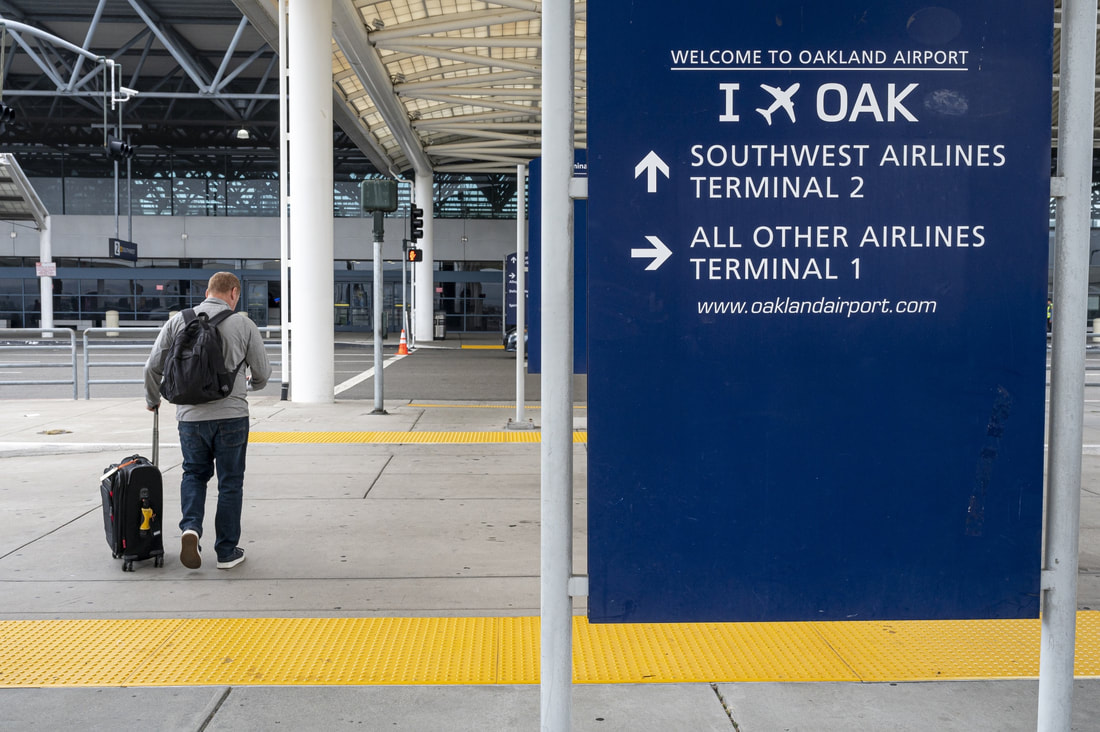

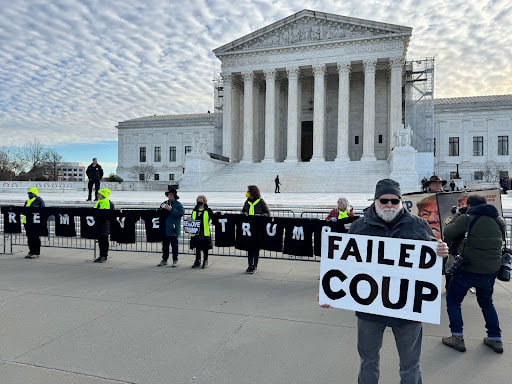

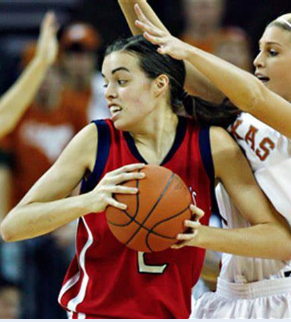

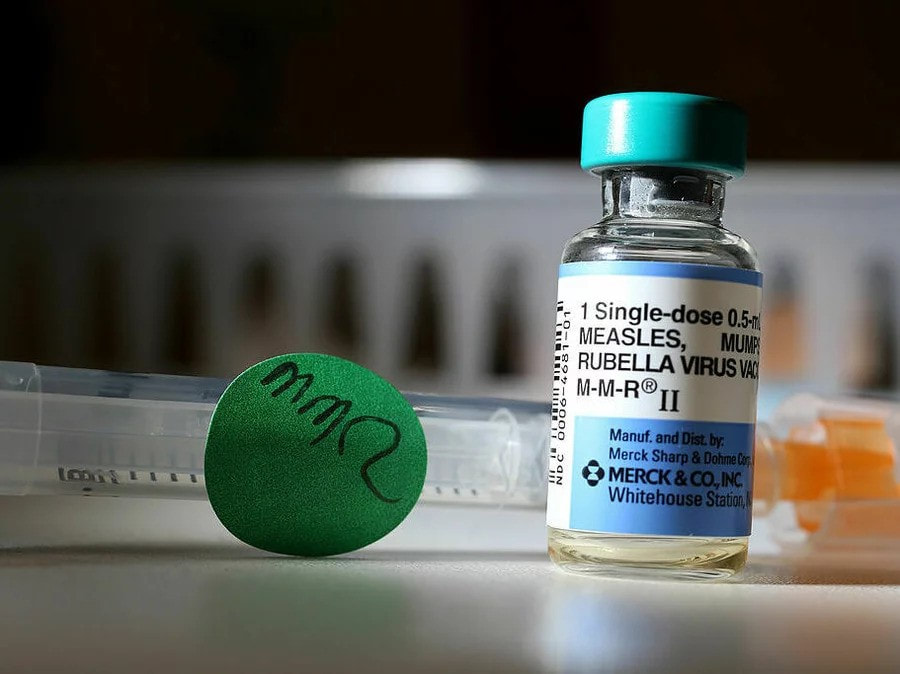

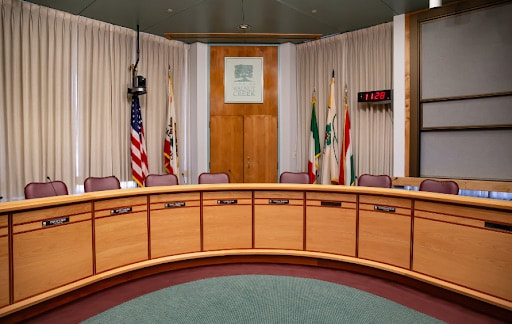

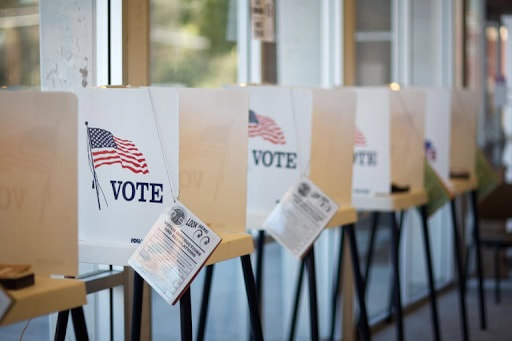
 RSS Feed
RSS Feed